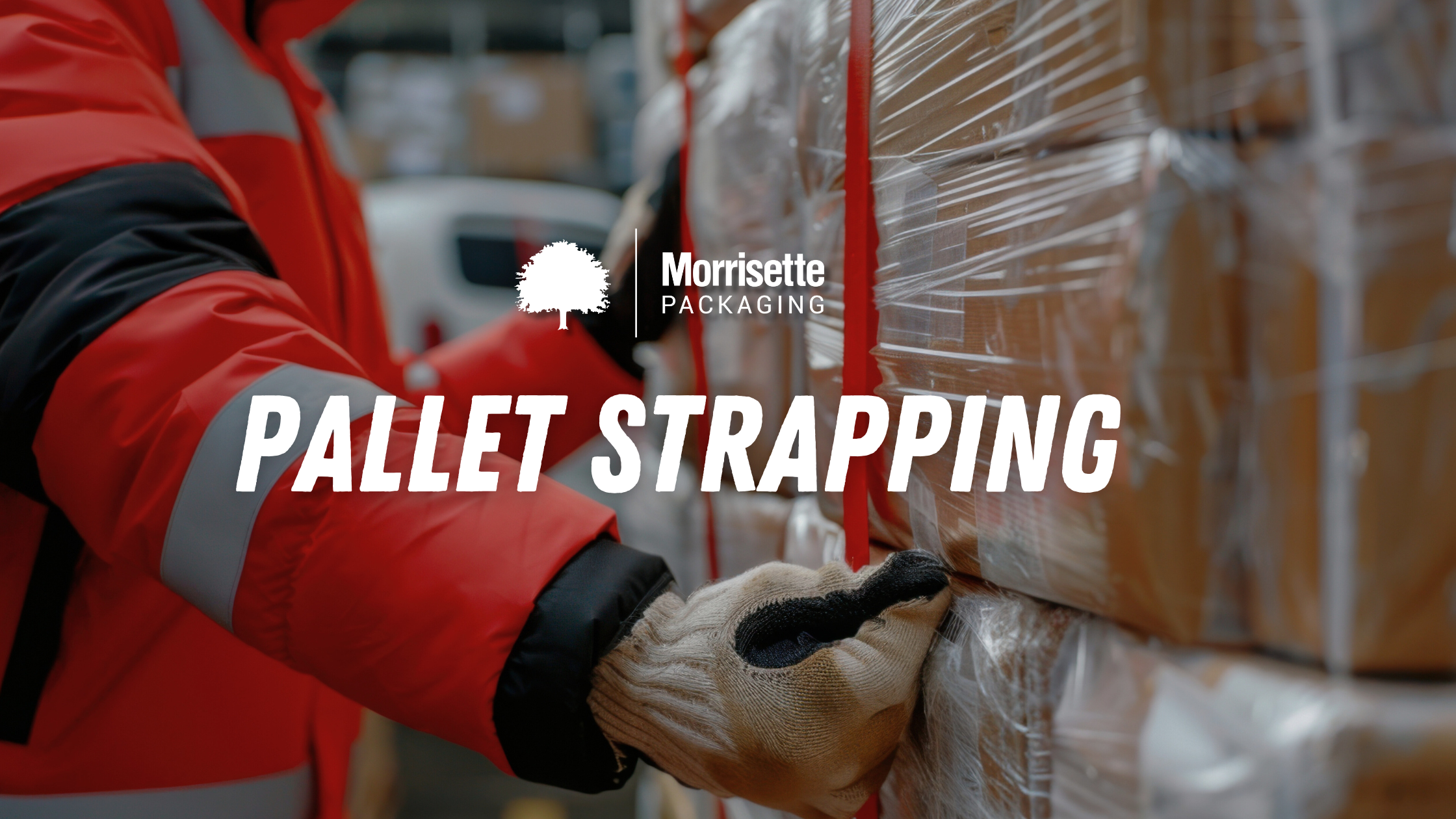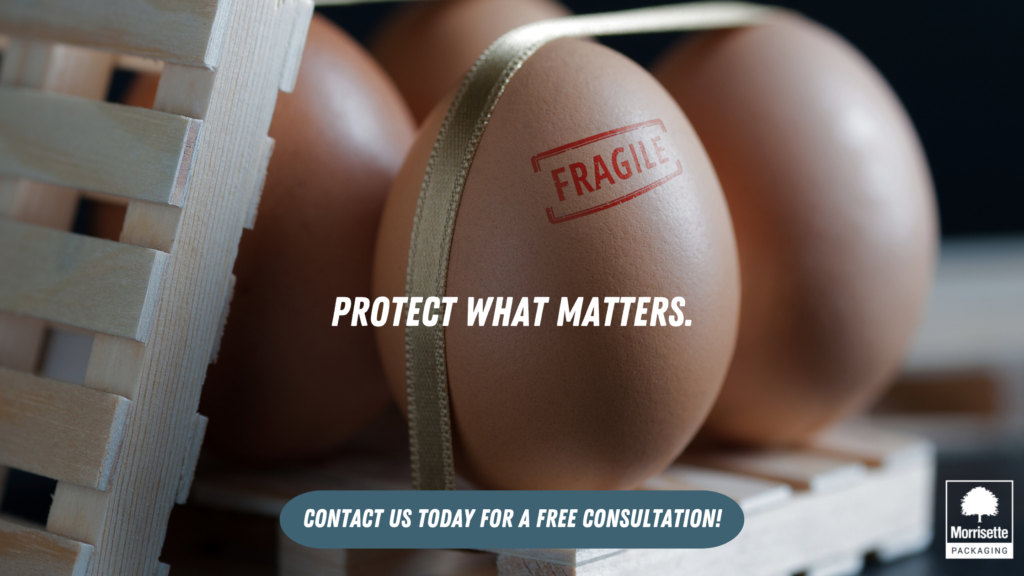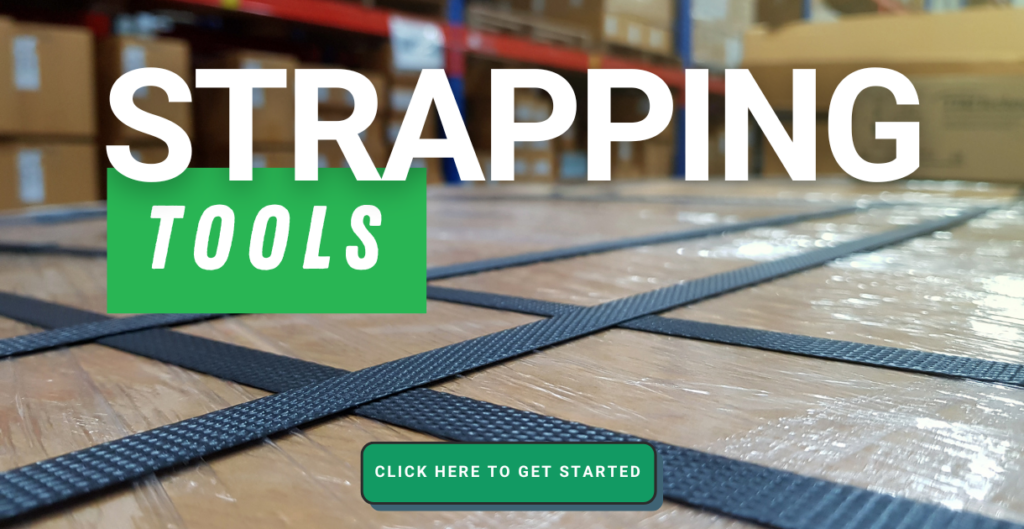
Strapping Guide 101: Everything You Need to Know
Introduction
Strapping involves securing a package or pallet using a durable material to prevent movement and damage during shipping. Straps are applied using manual or automated tools that tighten them to the appropriate tension before cutting them to size. While strapping is a straightforward process, automation can improve efficiency, reduce labor costs, and enhance workplace safety.
Strapping plays a crucial role in securing pallets and packages for safe transport. Whether you are shipping lightweight products or heavy industrial materials, choosing the right strapping system can make all the difference in ensuring product integrity. In this guide, we’ll explore different types of pallet strapping, poly strapping, and steel strapping, as well as automated equipment, customization options, and industry applications to help you make the best packaging supply decisions for your business.

What is Strapping?
When someone refers to strapping, they are referring to the straps that are placed all around sealed pallets, or individual packages to keep the packaging secure during the shipping process. Though strapping can be made from a variety of materials, they mostly all serve the same purpose, to keep the package in some way more secured while it is being moved around. Strapping is usually applied by someone through the use of strapping tools that both apply the material to the package and tighten it to give it the tension needed to keep the package secure. The material is then cut to separate it from the main roll. Even though this process is relatively simple, there are ways to automate it to make the entire process much more efficient and much more cost-effective. Before we get to how to automate it though, let’s talk a little more about the types of strapping materials out there, and what qualities you should look for when it comes to selecting strapping material.
There are three main materials that strapping is usually made out of, polypropylene, polyester, and steel. Though the number of materials used is limited, these three can essentially do any strapping related job.
TYPES OF STRAPPING MATERIALS
There are three main materials that strapping is usually made out of, polypropylene, polyester, and steel. Though the number of materials used is limited, these three can essentially do any strapping related job.
Before diving into automation, let’s explore the different types of strapping materials and what qualities define a well-made pallet strapping solution.
Polypropylene (PP) Strapping
- Lightweight & Cost-Effective: Ideal for light to moderate loads.
- Flexible & Elastic: Allows movement without breaking.
- Recyclable & Sustainable: A preferred choice for eco-conscious businesses.
- Best For: Retail shipments, food and beverage products, and general packaging supply needs.
Though it’s used for a number of purposes, polypropylene is a plastic-like material that is quite strong and durable. Despite the fact that it’s a rather hard material, it can still flex enough to be wrapped around a pallet, and it is powerful enough to hold even a large pallet together. This material is also more recyclable than others. Polypropylene really shines as a cheaper alternative to other strapping material that can still do the same job just as well, most of the time. It can mostly take on lighter or moderate level jobs due to its elasticity, but it won’t be able to handle extreme heavy duty jobs like steel can. It does have its limitations, but most of the time it can handle the job it’s being used on.
Poly Strapping (PET)
- High Strength & Durability: Suitable for heavier loads than polypropylene.
- Cost-Effective Alternative to Steel: Handles substantial weight without the risks of metal.
- Recyclable: Provides an environmentally friendly option for businesses.
- Best For: Industrial goods, automotive parts, and high-value shipments.
Polyester is another strapping material that is commonly seen in the industry. Polyester can be viewed as a cheaper alternative to steel. It can handle heavier duty loads than polypropylene can, but it has a tough time handling extreme heavy duty strapping jobs. It is also a more recyclable option than steel, and it comes with less risk of injury and is easier to deal with. It’s also usually more cost-efficient than steel, so if your operation can deal with having a weaker, yet more cost-efficient strapping material, then polyester may be best for you.
Steel Strapping
- Maximum Strength: Ideal for securing the heaviest loads.
- Limited Flexibility: Less adaptable but extremely secure.
- Higher Cost & Safety Risks: Requires careful handling due to sharp edges.
- Best For: Heavy machinery, construction materials, and large industrial shipments.
Steel is the most heavy duty and least flexible strapping material out there. It can handle the most heavy duty jobs and is the most expensive when compared to both polyester and polypropylene. Before these other two materials were in use, steel was the dominant material for most strapping jobs. However, if your operation doesn’t require extreme strapping capabilities then you essentially don’t have too much of a need for steel. There’s a reason why the other materials are so common, they can handle most jobs. However, for those extreme jobs, you’re going to want steel for your strapping. Do bear in mind that steel can also be a more dangerous material to deal with than the others. Basically, try to use steel as a last resort and make sure it’s really necessary for your job before committing to it.
Qualities of Well-Made Strapping Material
A high-quality strapping solution should meet the following criteria:
- Durability: Must withstand tension and pressure without breaking.
- Flexibility: Should adjust to different package shapes without snapping.
- Secure Hold: Prevents shifting during transport.
- Efficiency: Works well with strapping tools and automated systems
When it comes to quality strapping material, you’re mostly looking for durability. It needs to be able to stay together under intense pressure, and tension when wrapped around a load to ensure that the products inside stay secure. Durability should be the number one thing on your mind, but there are a few other factors that go into deciding the best qualities of strapping materials. Depending on the material you choose and the stuff you’re shipping, you also want it to be flexible enough to bend when it needs to avoid snapping. Some materials are better at that than others. Overall, you need to know the pros and cons of the given material you’re using, but durability should be the first thing you look for.

Automated Strapping Equipment
Strapping processes can be streamlined with automation, increasing efficiency and reducing manual labor. There are two primary types of automated pallet strapping machines:
Semi-Automatic Power Strapping Machines
- Worker Assistance Required: Operators manually position the strapping before the machine tightens and cuts it.
- Improves Safety: Reduces physical strain on workers.
- Best For: Mid-volume packaging supply operations.
Automatic Power Strapping Machines
- Fully Automated: Sensors detect pallets and apply pallet strapping without human intervention.
- High-Speed & Cost-Effective: Reduces material waste and enhances throughput.
- Best For: Large-scale operations and high-volume shipments.
Essential Strapping Tools
To properly secure poly strapping and steel strapping, you’ll need the right tools to fit your application:
- Cart: Used to store and dispense strapping.
- Tensioner: Used to tighten pallet strapping.
- Seals: Used to lock strapping into place.
- Sealer: Used to close seals on steel strapping.
- Cutter: Used to cut excess poly strapping.
We can help you find the right tools for your packaging supply needs, ensuring a seamless and efficient pallet strapping process.
Can It Be Customized to Fit My Brand?
While strapping is primarily functional, there are limited customization options to align with branding needs:
Printed Polypropylene Straps: Allows for logos or text to be added for enhanced visibility.
Color Options: Different colored poly strapping for brand recognition or categorization.
Industries Served and Environmental Impact
Morrisette Packaging provides pallet strapping and steel strapping solutions for a wide range of industries, including:
Medical Supply
Health & Beauty
Retail & E-commerce
Food & Beverage
Firearms & Defense
Order Stock or Custom Designed Strapping Material and Equipment Today!
Morrisette Packaging offers a wide selection of stock and custom pallet strapping, poly strapping, and steel strapping materials and equipment to enhance your packaging supply operation. Whether you need a reliable strapping solution for small shipments or a fully automated pallet strapping system for high-volume processing, we have the expertise and inventory to support your needs.
📞 Contact us today to discuss your packaging supply requirements and find the best strapping solution for your business.
